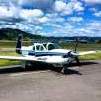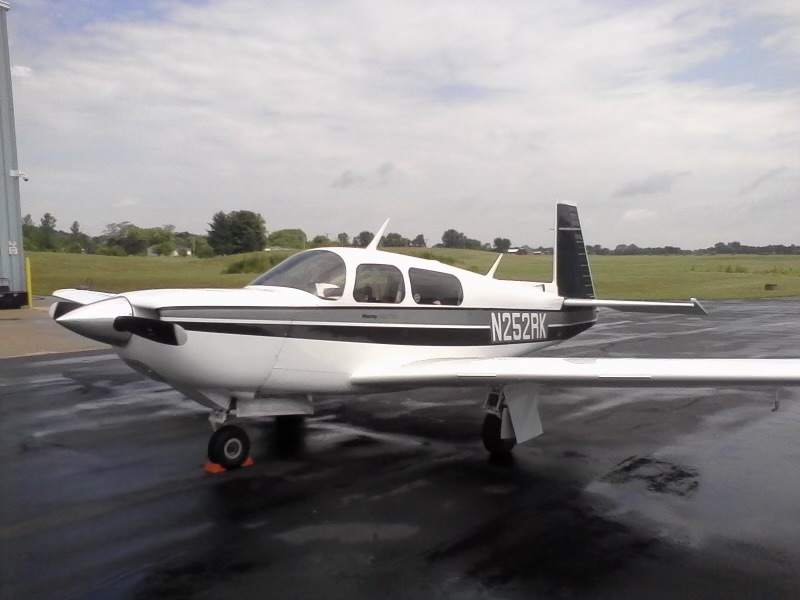-
Posts
6,164 -
Joined
-
Last visited
-
Days Won
30
Content Type
Profiles
Forums
Blogs
Gallery
Downloads
Events
Store
Everything posted by Ragsf15e
-

Poll: what power settings do you use on an IO-360?
Ragsf15e replied to AndreiC's topic in Vintage Mooneys (pre-J models)
I use the “power boost” any time above about 2000’, clean air and not imc. I also run full throttle all the time unless I’m in the pattern, instrument pattern or sightseeing. However, I’m always higher than you as I’m out west. You probably want ~75% or below power, so around 23”/2500 rpm or less for engine longevity according to lycoming. The mixture is up to you. Peak isn’t the hottest and it is fine up higher. In fact, it’s probably better than lean of peak if you get down around 60% power (up around 10,000). Around 50 rich of peak will be the hottest. You probably won’t want to be there. you need to learn about 100 rich of peak or ~20 lean of peak and the reasons to use them. Of course you can use other settings, but these are a starting point. Up around 8000’ you can use full throttle and experiment with the mixture without hurting anything because youll be at a low power due to the thin air. I wouldn’t experiment down at your 2-4000’ cruise as you could actually hurt it - which is hard to do in an na 360, but you could potentially get really hot or even detonate down there. -

Mooney down in Washington state
Ragsf15e replied to bmcconnaha's topic in Mooney Safety & Accident Discussion
I crossed the Cascades that day too. It wasn’t a good day to cross in a non-fiki airplane, imc, with a non (or maybe barely) current instrument pilot in a new to him airplane. The next day (or maybe 2 days later) was clear and beautiful. I don’t think the ice or the autopilot or even his lack of currency/proficiency killed him. I think his judgment/overconfidence killed him. He should have sat in a hotel and waited for vfr weather. Hindsight is 20/20, but I think he should have been able to judge that one better. -
Just be glad you didn’t hit the prop on that 3rd bounce! That’s the normal ending. Much more painful to both the ego and wallet.
-
I feel like it helps a lot with an idling engine but I didn’t measure the change. Couple weeks ago I did a bunch of these and pulled it back. Felt like I’d pulled up the gear!
-
I’m going to throw out one more technique that’s different than these are usually taught. We used this for emergency engine out landing in the USAF T-6. Pick your aim point while on downwind, usually ~500’ prior to your touchdown point but depends on winds. Configure with only gear abeam aim point. Turn base a couple seconds later. Now here’s the difference… hold that aim point no matter what (except for a low speed limit, say 80mph). So you hold the nose down to “fly into the impact point (aim point)” and note your airspeed. You’re hoping to see something just above your desired final airspeed and increasing (slowly). As long as you hold the aim point, you can use airspeed as your primary energy indicator. If it’s increasing, use flaps, slip or elongate your pattern. If it’s steady, do nothing. It takes a little practice to be ok with this technique.
-
One other way to “increase” energy is to pull the prop control all the way out. It’s a noticeable improvement in glide and normally we do these things without pulling it. In a real engine out glide situation, the prop control may already be out because it’s a good thing to do to increase glide range.
-

Emergency Gear Crank Cable 560247-501.
Ragsf15e replied to spectre6573's topic in Vintage Mooneys (pre-J models)
You should maybe put the suppliers info on that sketch too for saving. That was a great find! -
I personally do them a little higher on energy (faster) than your speeds. Not because you want to land faster (you don’t), but because you have lots of methods to kill energy and no way to get it back. So i plan to start with no flaps, add in half during base (~90mph) when I’m starting to be sure about my winds and perch point working, and then full flaps and/or slip on final when I’m really sure that I’ve nailed my aim point and speed.
-
Some of these relays (possibly not on your newer model) are electronic switches mated to mechanical plungers. I haven’t taken one apart, but it would be interesting to see which part failed? Edit: oh, I see yours is the solenoid. I was thinking it was an up limit switch… Also, consider yourself lucky that it didn’t work perfectly on the ground and for the next 3 weeks and fail again on an ifr flight at max gross weight… intermittent problems are the worst.
-
Yes, you can display pressure altitude but that goes blank with the error message. My setup goes directly from the G5 to the transponder via serial cable. No more encoder with grey code! That’s why it’s weird.
-
Yes, I agree. Although I don’t want it broken, it would be a lot easier to fix if it was properly broken! It’s been in there about 6 years. I agree with re-racking it, ill give that a try. I did stick my head under the panel and everything is secure, accessible, and looks like great wiring.
-
Was the fuel and oil properly accounted for?
-
I also use hot start technique after initial start. If it doesn’t start, you can always do a cold start. If you do a cold start first (prime it), you can’t take that back.
-
So two times now on consecutive flights my GTX345 has popped an error message “No Altitude” or something like that (I need to look up exactly what it said in the manual). Sure enough, atc said they lost my altitude. It’s using my G5s as an encoder and they don’t show any errors or anything weird with the altitude. Both times I turned off the transponder, turned it back on, selected “alt” and it worked perfectly. Both times it was just after takeoff, and the transponder then worked flawlessly for a 3 hour flight. Any thoughts? Anyone know what kind of troubleshooting an avionics shop would want to do if it keeps happening? Heres the error, but I don’t think it lost contact with the g5s as it then worked fine for 3 hours?
-
I’ve had a similar audio issue after maintenance and it was due to the ignition leads not being tightened. In fact the top 4 were all loose. Might just want to check there’s no fraying and all are secure at the mag and plugs.
-

Alt Field CB Tripping When PTT is Pressed
Ragsf15e replied to JohnM's topic in Modern Mooney Discussion
Possibly, but most of the Mooney ammeters are set up to just show current to/from the battery, not the total power being drawn by the electrical system. -

Alt Field CB Tripping When PTT is Pressed
Ragsf15e replied to JohnM's topic in Modern Mooney Discussion
I would check (and probably just redo) the radio ground. The vr is another good thing to look at though… Heres another thought… swap the antennas in the back of the radios and see if it switches to comm 2. That way you’ll know if it’s a shielding issue with the antenna or a power issue with the radio. I know it’s sometimes difficult to get to the back of the radios… -

Emergency Gear Crank Cable 560247-501.
Ragsf15e replied to spectre6573's topic in Vintage Mooneys (pre-J models)
Yeah, I agree with you, maybe I was wishful thinking that he was solving the problem for those of us with the vintage cranks, but you might be right. -

Emergency Gear Crank Cable 560247-501.
Ragsf15e replied to spectre6573's topic in Vintage Mooneys (pre-J models)
I was thinking he described his as the circular crank on the side of the cabin next to the pilot’s left knee? -

Emergency Gear Crank Cable 560247-501.
Ragsf15e replied to spectre6573's topic in Vintage Mooneys (pre-J models)
So does it look like you can basically build one of these by having the parts machined and installing a new cable? -

Emergency Gear Crank Cable 560247-501.
Ragsf15e replied to spectre6573's topic in Vintage Mooneys (pre-J models)
Maybe you should have bought 10m and gone into business?! This one is spooky because there’s not much of a workaround if you can’t get this part. -

Emergency Gear Crank Cable 560247-501.
Ragsf15e replied to spectre6573's topic in Vintage Mooneys (pre-J models)
What do you guys think would happen if someone ordered one of these from Mooney? -
No that’s the one. I did think it was a female pilot but I could be wrong. Fighter pilot stories only require 10% truth anyway, so this one is solid gold even if i said a “female pilot did an inverted break and a -4g base turn”.
-
Not to insult Naval Aviators, but didn’t that $100 million F-35 crash in the S China Sea because the Navy pilot was trying to “buzz the tower” to show off for her last landing on the boat?
-
Fair enough. You can obviously do it that way. I will also load the full approach, but will activate vtf as it does keep the waypoints that are on the straight line segment to the faf. As you are indicating, “activating the approach” isn’t even a requirement. There’s no magic. It just takes care of a bunch of tasks you’ll eventually need to do like setting the gps mode to vloc (depending on your system and approach) and setting steering to the iaf or faf. If you do those things yourself, no need to activate. Although you do have to be careful how you activate the leg into the faf as going direct to it will not work and could lead you to believe you’re established when you aren’t. Activating the approach mode on the autopilot is a whole different beast because it selects new autopilot modes and authorizes the autopilot to steer you laterally and vertically on the approach.





